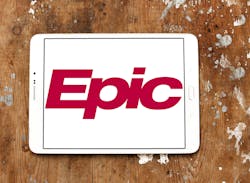EHR giant Epic Systems has announced that when the Trusted Exchange Framework and Common Agreement (TEFCA) application process begins, it will apply to become one of the inaugural Qualified Health Information Networks making up a national “network of networks.”
From the beginning of the TEFCA process, it was never clear exactly how many QHINs the Office of the National Coordinator for Health IT and the Sequoia Project envisioned, and whether EHR vendors such as Epic and Cerner would apply. Large national networks such as the CommonWell Health Alliance and eHealth Exchange have expressed their intention to apply to become QHINs.
According to ONC, a QHIN is a network of organizations working together to share data. QHINs will connect directly to each other to ensure interoperability between the networks they represent. Each QHIN represents a variety of networks and participants that they connect together, serving a wide range of end users.
In 2008, Epic launched Care Everywhere, a platform to link users of its software nationwide. Today, providers use Care Everywhere to exchange more than 10 million patient charts (composed of 24 million actionable, standards-based documents) every day, and Epic notes that half of those exchanges occur with organizations that use different interoperable systems. Nearly all of Epic's customers also choose to exchange data through Carequality, a nationwide exchange framework that includes roughly 70 percent of U.S. hospitals.
Epic says it collaborated with ONC, the Sequoia Project, and the broader healthcare community to build consensus around the principles and procedures of TEFCA.
"Our fundamental goal is to help all patients receive informed, personalized care—regardless of where they go to receive it," said Dave Fuhrmann, senior vice president of interoperability at Epic, in a statement. "Our customers have led the way with large-scale interoperability through Carequality, and we're happy to help with the next stage in the evolution of interoperability."
In a 2021 Healthcare Innovation article, Allison Weathers, M.D., a neurologist and associate chief medical information officer at Cleveland Clinic, described how she uses Care Everywhere in her practice. She recalled several years ago seeing a patient who had recently been to a hospital in Dallas but wasn’t sure what tests had been done. “With Care Everywhere I was able to ping Parkland Hospital in Dallas, and within seconds I had her MRIs, her ECGs and the full notes,” Weathers recalls, “and it completely changed the whole visit — what I was able to know and what I was able to do for her. That was my very first Care Everywhere experience and it immediately spoke to the power of this tool.”
Weathers noted that Care Everywhere allows medication, allergy, and immunization records from other health systems to be presented to the providers automatically in the chart, and the providers can easily review them and do medication reconciliation.
There is a sea change under way in terms of how providers think about importing data from other organizations. “A few years ago, we would say we want this data, but it’s not our data, so we’ve got to keep it segregated, and in a walled-off area of the EHR,” Weathers said. “People thought that was the safest thing to do because we don’t know the quality of it. We don’t want to mix it with ours. We don’t want to be responsible in that same way. Now I would say we have evolved to where we say that unless that outside MRI is right next to our MRI, where we go to look in the EHR, people are going to miss it. Now, everybody is shifting over to expecting to see these data points.”
Five years ago, she said, Care Everywhere would have been used much more for sharing with other health systems using Epic. But in the Cleveland market, several health systems use other EHRs and they are exchanging data regularly. “We’ve made such strides,” Weathers added. “The experience is still a little bit different for data that’s pulled in from non-Epic clients. It doesn’t come across in quite the same way. It’s not quite as integrated. But I think it’s getting better by leaps and bounds, and CliniSync, which is the Ohio HIE, has worked very hard to try to get over some of the barriers and have the data come over in a usable way.”


